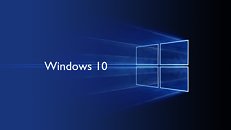- Joined
- Aug 20, 2007
- Messages
- 21,452 (3.40/day)
| System Name | Pioneer |
|---|---|
| Processor | Ryzen R9 9950X |
| Motherboard | GIGABYTE Aorus Elite X670 AX |
| Cooling | Noctua NH-D15 + A whole lotta Sunon and Corsair Maglev blower fans... |
| Memory | 64GB (4x 16GB) G.Skill Flare X5 @ DDR5-6000 CL30 |
| Video Card(s) | XFX RX 7900 XTX Speedster Merc 310 |
| Storage | Intel 905p Optane 960GB boot, +2x Crucial P5 Plus 2TB PCIe 4.0 NVMe SSDs |
| Display(s) | 55" LG 55" B9 OLED 4K Display |
| Case | Thermaltake Core X31 |
| Audio Device(s) | TOSLINK->Schiit Modi MB->Asgard 2 DAC Amp->AKG Pro K712 Headphones or HDMI->B9 OLED |
| Power Supply | FSP Hydro Ti Pro 850W |
| Mouse | Logitech G305 Lightspeed Wireless |
| Keyboard | WASD Code v3 with Cherry Green keyswitches + PBT DS keycaps |
| Software | Gentoo Linux x64 / Windows 11 Enterprise IoT 2024 |
If you are running the original release of Windows 10 for some reason nearly 2 years after launch, you may want to consider finally doing a feature update to one of the newer builds. This May's "Patch Tuesday" will be the last for the original release build of the operating system, otherwise known as "Version 1507."

Microsoft states the usual tune regarding what will happen if you ignore this: Your computer will continue to work, but you will miss out on new security updates. This could make your machine vulnerable. Furthermore, several driver model and kernel level changes have occurred since the original build, meaning you may not even be able to load your latest GPU drivers, for instance.
It is worth noting this is the first time Microsoft has EOL'd an operating system under 2 years of age. Microsoft defends this of course by explaining the "Windows as a Service" model is built for constant feature updates, to improve the OS over time. Windows 10 itself remains an actively supported product, naturally.
Regardless of how you feel about the practice of "Windows as a Service," you probably should consider updating machines still running this build of Windows 10, if you have any. The only reason I can picture you'd still be on this build would be bandwidth limited machines, in which case, you may have to make an exception and get bandwidth somehow (or burn an update CD/USB, etc). There are also of course offline machines, where you likely don't care either way about network security issues, but those are few and far between today. If you are online, it really is advisable to update if you can to an actively supported OS.
View at TechPowerUp Main Site

Microsoft states the usual tune regarding what will happen if you ignore this: Your computer will continue to work, but you will miss out on new security updates. This could make your machine vulnerable. Furthermore, several driver model and kernel level changes have occurred since the original build, meaning you may not even be able to load your latest GPU drivers, for instance.
It is worth noting this is the first time Microsoft has EOL'd an operating system under 2 years of age. Microsoft defends this of course by explaining the "Windows as a Service" model is built for constant feature updates, to improve the OS over time. Windows 10 itself remains an actively supported product, naturally.
Regardless of how you feel about the practice of "Windows as a Service," you probably should consider updating machines still running this build of Windows 10, if you have any. The only reason I can picture you'd still be on this build would be bandwidth limited machines, in which case, you may have to make an exception and get bandwidth somehow (or burn an update CD/USB, etc). There are also of course offline machines, where you likely don't care either way about network security issues, but those are few and far between today. If you are online, it really is advisable to update if you can to an actively supported OS.
View at TechPowerUp Main Site









